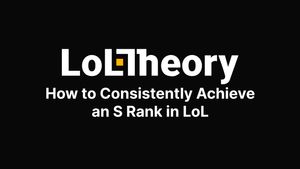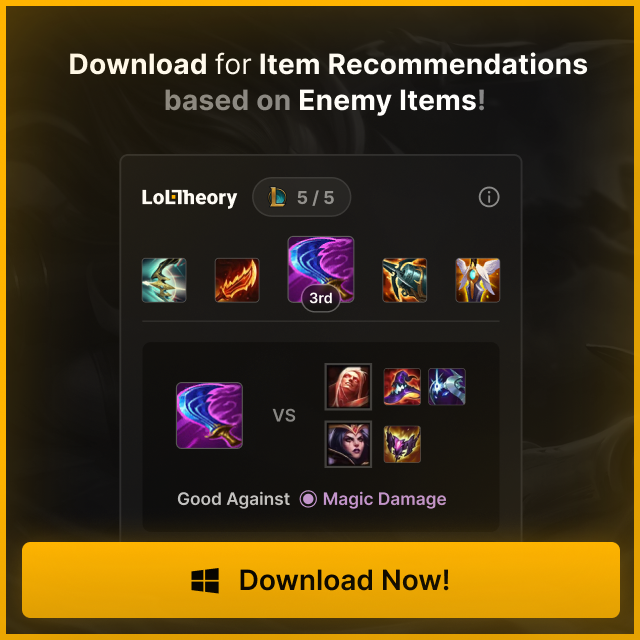Welcome to the ultimate guide on how to consistently achieve an S rank in League of Legends (LoL). Whether you're a seasoned veteran or an ambitious newcomer, you know that hitting that coveted S rank is the pinnacle of individual performance.
It's not just about bragging rights; it's about mastering the game on a level that most players only dream of.
In this comprehensive guide, we'll delve into key metrics like KDA, Vision Score, and Creep Score, as well as game-changing strategies to elevate your gameplay.
We'll even debunk some myths and answer lingering questions about the elusive S rank.
Get ready to become not just a great player, but a respected LoL expert, equipped with the actionable knowledge you need to dominate the Fields of Justice.
Key Metrics for S-Rank
So you want to dominate the Rift and snag that elusive S rank, huh? You've come to the right place. In LoL, grades aren't just letters; they're badges of respect.
The key metrics for S-rank lie in four cornerstones: KDA (Kill/Death/Assist ratio), CS (Creep Score), objective control, and vision score.
First off, KDA—kills are flashy, but deaths are just as crucial. Maintain a KDA above 3 for that S-rank shine.
Next, CS. A CS count above 7/min is what respected experts like me aim for. Then we have objective control. Whether it's dragons, barons, or turrets, being part of these key game moments bumps up your rating.
Finally, vision score. Get into the useful habit of consistent warding; a vision score double your game length is solid.
Follow these metrics and you won't just be trusted by your team—you'll become the team MVP. No fluff, just tried-and-true expertise to get you that S rank.
KDA Importance
Ah, KDA, the bread and butter of LoL's grading system. While kills get the spotlight, your death count can be an equally significant make-or-break factor for that sought-after S rank.
An elite player understands the weight of each component: Kills, Deaths, and Assists.
A balanced KDA over 3 not only signals you're an asset to your team but also earns you the trust and respect of teammates. It's not just about racking up kills; it's about contributing meaningfully to the game.
So keep that KDA healthy and watch your ranking soar.
Vision Score
Vision score is the unsung hero in climbing to that S rank, and it's often the most overlooked.
A well-placed ward can turn the tide of a match, granting valuable intel and securing objectives.
Trust me, as someone who's seen the difference it makes, aim for a vision score that's at least double the game length. It's not just about dropping wards; it's about providing useful, game-changing information.
Ignore vision at your peril; elevate it, and you'll become a respected and crucial playmaker.
Creep Score
Creep Score (CS) may seem trivial, but it's a gold mine—literally. A seasoned player knows that a strong CS can provide the economic edge to secure essential items faster.
Aim for at least 7 CS/min. This isn't arbitrary; it's a trusted benchmark that separates the casuals from the contenders.
High CS reflects your ability to efficiently farm while juggling other game aspects. It's a key metric that adds significant weight to your overall performance, ensuring you're not just useful but indispensable.
Your Path to S-Rank
Alright, you've got the metrics—KDA, Vision Score, Creep Score—but what's the game plan for pulling it all together? First up, prep time.
Before you even hit that "Play" button, set your mentality straight. Aim high and know that you're pursuing excellence in every match. This is where the respect of your teammates starts, with you respecting yourself and your objectives.
In-game, make it a habit to review your stats every 10 minutes. Use that as a quick diagnostic tool to adjust your strategy.
Falling short on CS? Hit the jungle or focus on last-hitting.
Vision score lacking? Get those wards up ASAP.
KDA subpar? Reevaluate your positioning and engagement choices.
And here's the kicker—review your performance post-game, win or lose. Go beyond the victory screen or defeat banner; analyze what you did right and what needs work.
Learn from every game; that's the expert path to consistency.
Follow this roadmap, and you'll not only become a trusted and respected player, but you'll also see those S ranks roll in.
Role Specialization
Role specialization is your secret weapon for consistent S ranks. Mastering a specific role lets you focus on the unique skills and metrics vital to that position.
Whether you're an ADC kiting for optimal damage or a Support warding critical choke points, specialization amplifies your expertise. This focus leads to more consistent high-level plays, cementing your status as a trusted, indispensable asset to your team.
So, choose your role wisely and become the go-to expert in your domain.
Balancing Objectives and Farming
In the race for an S rank, balancing objectives and farming is your tightrope walk. Too focused on CS, and you'll miss out on dragon fights or turret pushes.
Overcommit to objectives, and you risk falling behind in personal gold and XP. The key here is timing: Know when to leave the lane for that game-changing objective and when to buckle down for farming.
By striking this balance, you'll become a respected team member, adept at resource allocation for the win.
Beyond the Basics
Elevating your game beyond the basics is where S ranks become routine. It's not just about mechanical skill but nuanced understanding—deciphering enemy movements, predicting plays, and intuitive shot-calling. Master these subtleties and you'll transition from a useful player to a respected LoL expert.
Mindset and Decision-Making
Mindset and decision-making are the intangibles that set you apart. Winning the mental game isn't optional; it's a prerequisite for that S rank.
Start by adopting a growth mindset.
Accept that setbacks are stepping stones, not roadblocks. When you make a mistake, don't tilt; analyze and adapt.
Your decisions in-game—from when to engage to when to retreat—should be deliberate, informed by past experiences and current conditions.
As someone who's weathered the ups and downs of LoL, I can attest that effective decision-making can override a bad start or even turn the tide in a losing game.
It earns you the respect of your teammates and the trust of your friends in duo queue. In a game so multifaceted, mastering the psychology of play is an invaluable asset.
Nail this, and you're not just a player—you're a trusted leader on the path to consistent S ranks.
Efficient Warding Techniques
Warding isn't just about lighting up the map; it's a chess game of anticipation and information control. Efficient warding means placing wards where they'll offer the most utility: choke points, objective pits, and enemy jungle entrances.
But here's the advanced tip: time your wards with upcoming objectives. Thirty seconds before a Dragon or Baron? That's your cue to establish vision control.
You can amplify your impact by investing in Control Wards and Oracle Lenses. Control Wards deny enemy vision, and sweeping with Oracle can dismantle their information network.
As an experienced player, let me tell you, successful warding can make you the unsung MVP of your team.
Embrace these techniques and you'll go beyond just being a useful player—you'll become an indispensable, trusted strategist that teammates will want in every match.
With this level of vision control, that S rank is just around the corner.
Analyzing Your S-Rank
Securing that coveted S rank is a triumph, but don't let the celebration end there. What sets you apart is your ability to analyze what earned you that grade.
Up next, we'll delve into comparative performance metrics to understand how you stack up against others in your role.
We'll also unpack the importance of scrutinizing post-game stats, to identify your strengths and areas for improvement.
Lastly, we'll address a burning question: does your team's performance influence your personal S rank?
Buckle up, because your journey to becoming a trusted LoL expert is about to go deeper.
Comparative Performance
Comparative performance is where you size yourself up against the competition, particularly players in the same role. League of Legends offers API-based tools and third-party platforms that provide stats down to the finest details.
Why does this matter?
Because becoming an S-rank player isn't just about besting yourself; it's about outclassing others.
Trust me, as someone who regularly scrutinizes performance metrics, you discover nuances you might've otherwise overlooked.
Knowing that you average a higher vision score or CS compared to others in your tier not only bolsters your confidence but also validates your strategy.
The opposite holds true as well; falling short in specific areas highlights where you can focus your improvement. Use these insights to fine-tune your gameplay and establish yourself as a respected authority in your role.
Keep an eye on how you measure up, and you'll keep those S ranks coming.
Importance of Post-Game Stats
Post-game stats are your treasure trove of insights—this is where the real learning happens. You've exited the battlefield, and now it's time for some after-action review.
A detailed breakdown shows not just how well you performed, but also where you excelled or stumbled. From damage dealt to wards placed, these metrics offer a granular view of your impact.
The importance can't be overstated. As an experienced player, I religiously review these stats to identify consistent patterns.
- What's my average CS per game?
- Am I warding enough?
- How's my damage output?
By interrogating these figures, you pinpoint what's already working and what requires more focus.
So after each game, invest a few minutes in the post-game stats.
This is how you transition from a player who occasionally nails an S rank to an expert who understands the mechanics that get you there.
Does Team Performance Affect My S Rank?
While your grade mainly hinges on your individual contribution, a well-coordinated team can amplify your stats. But take note, an S rank is still achievable in a losing game. It's about maximizing your impact, regardless of the team outcome.


